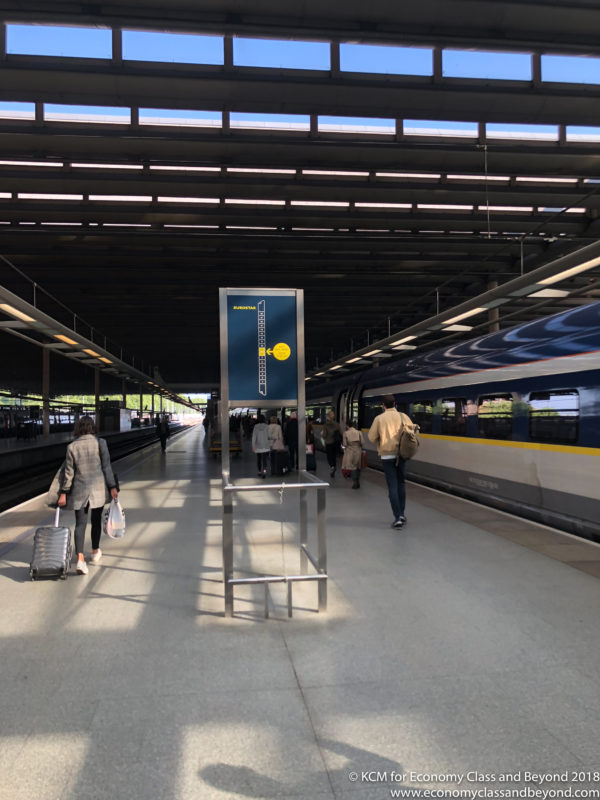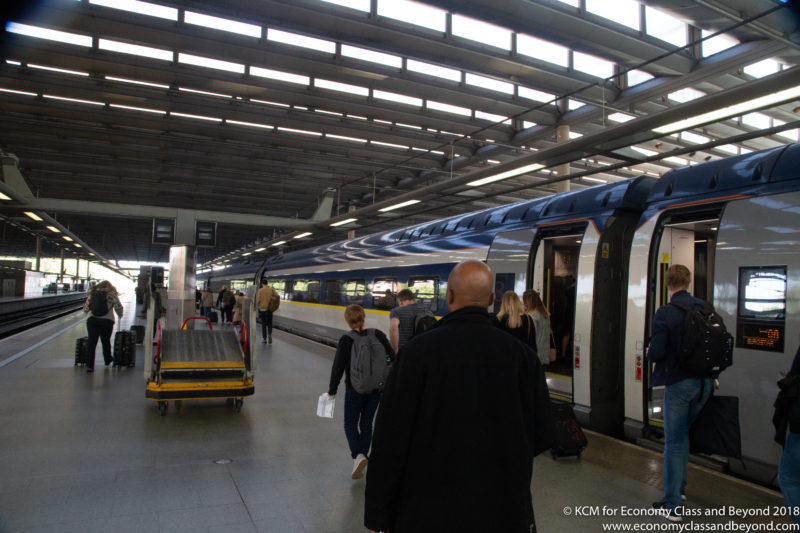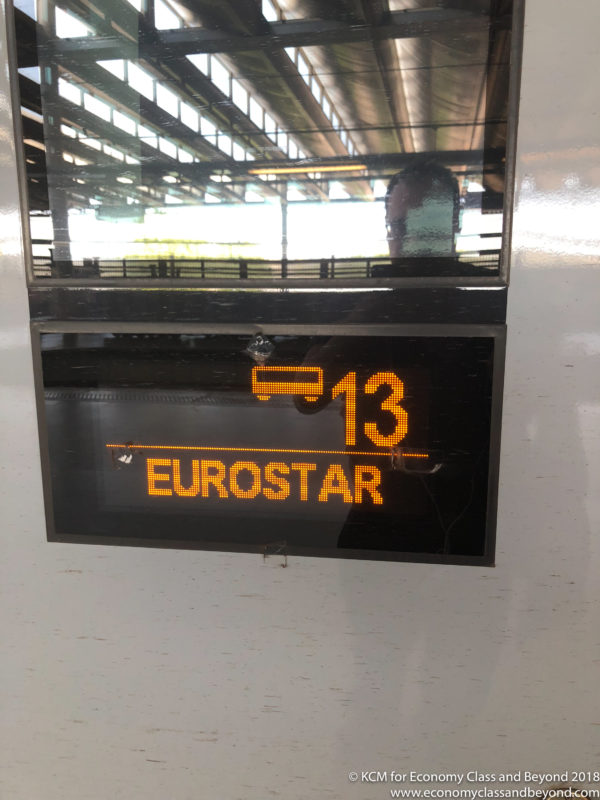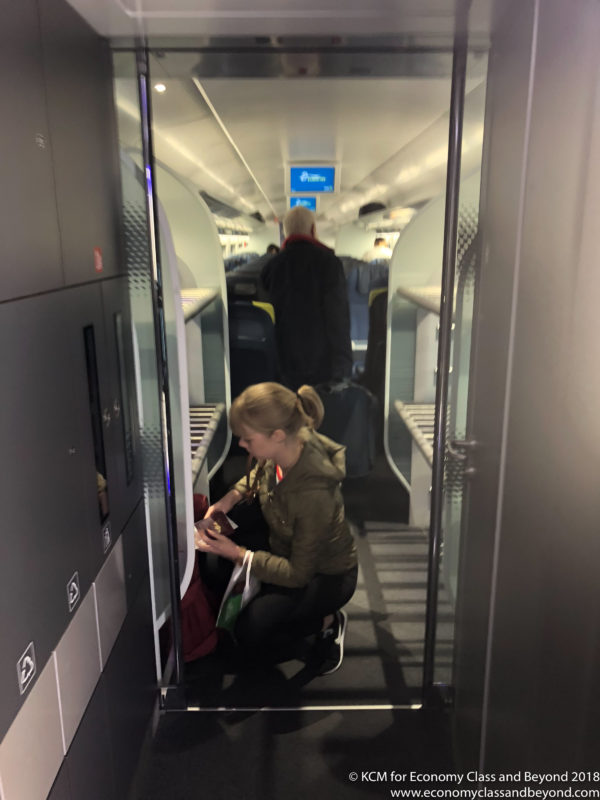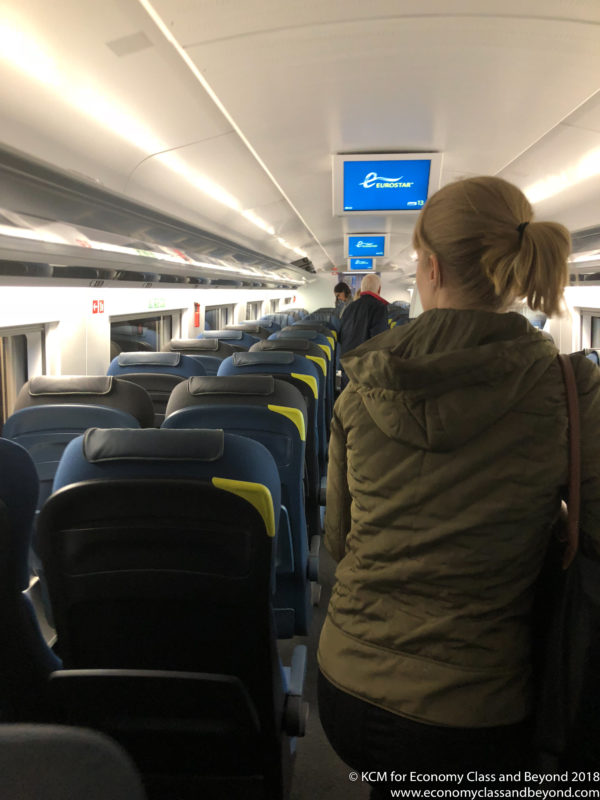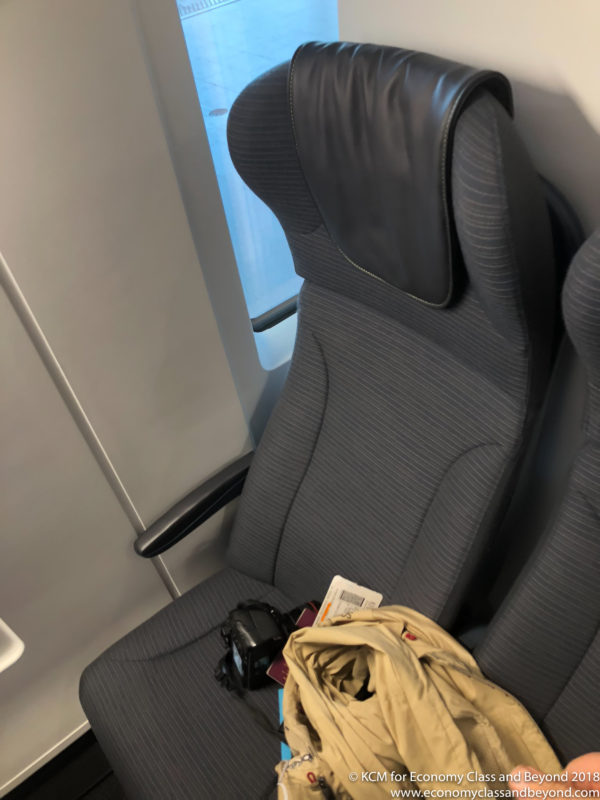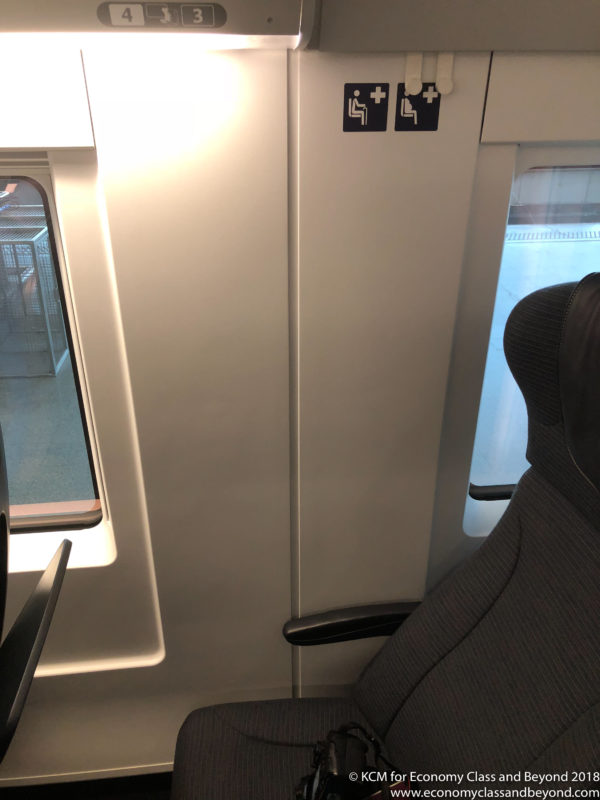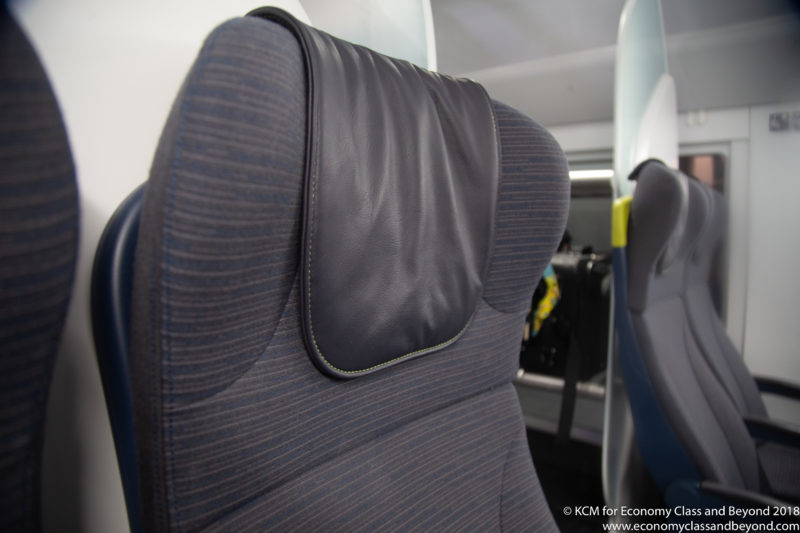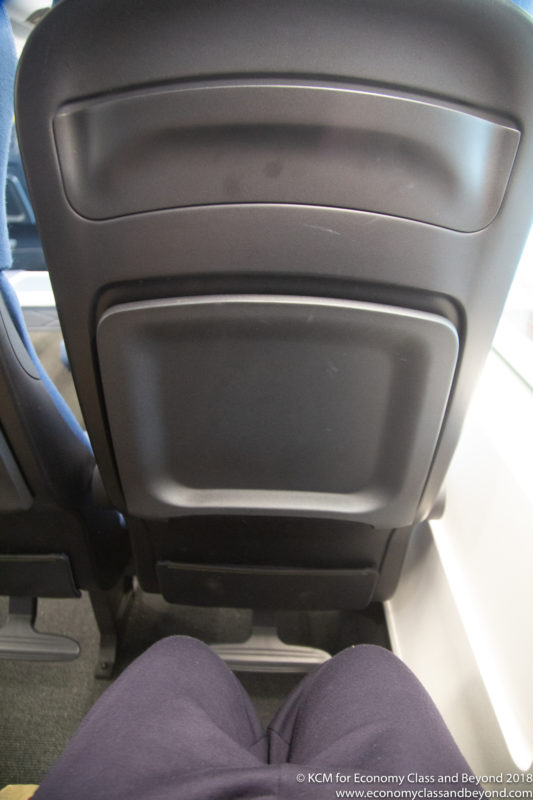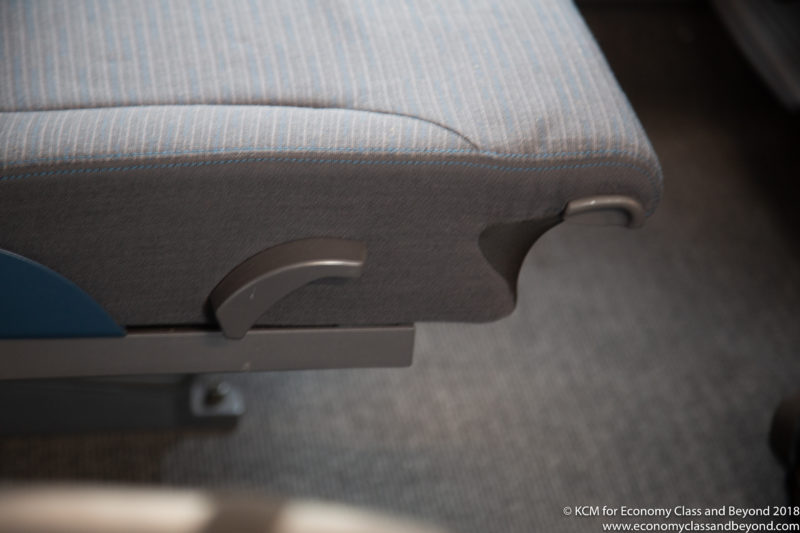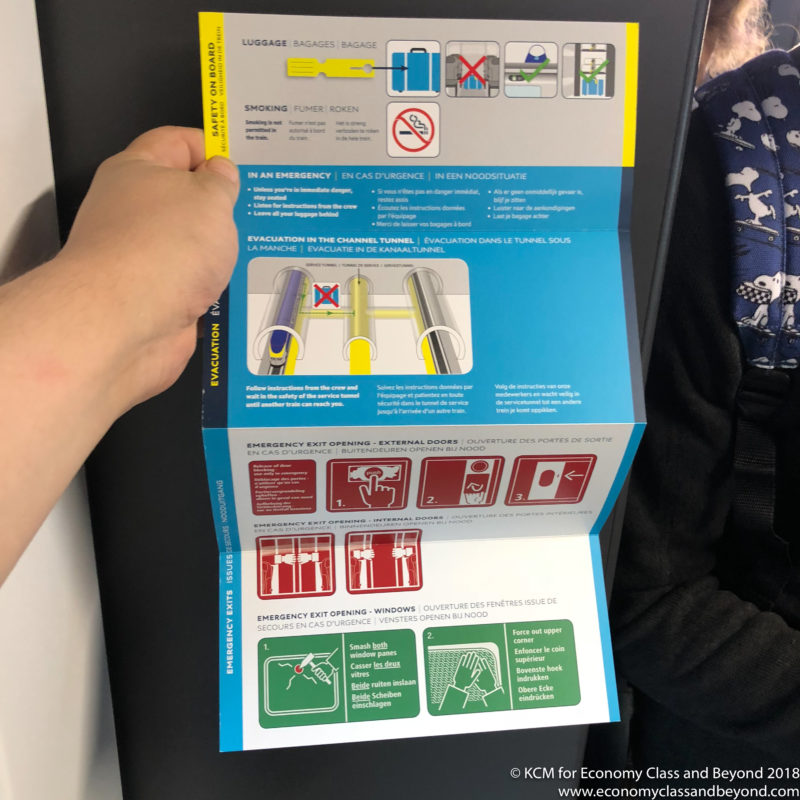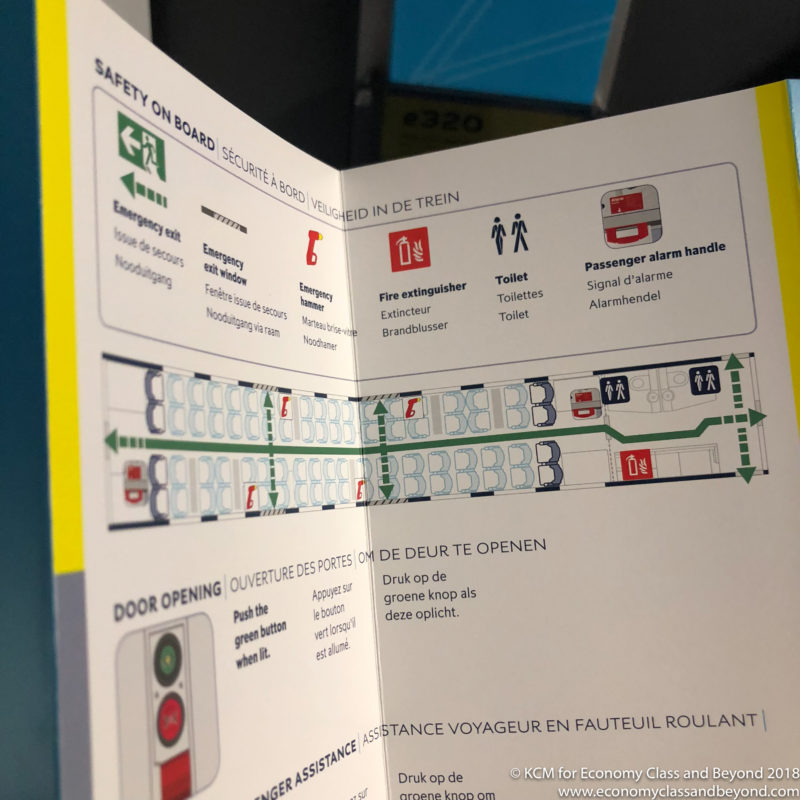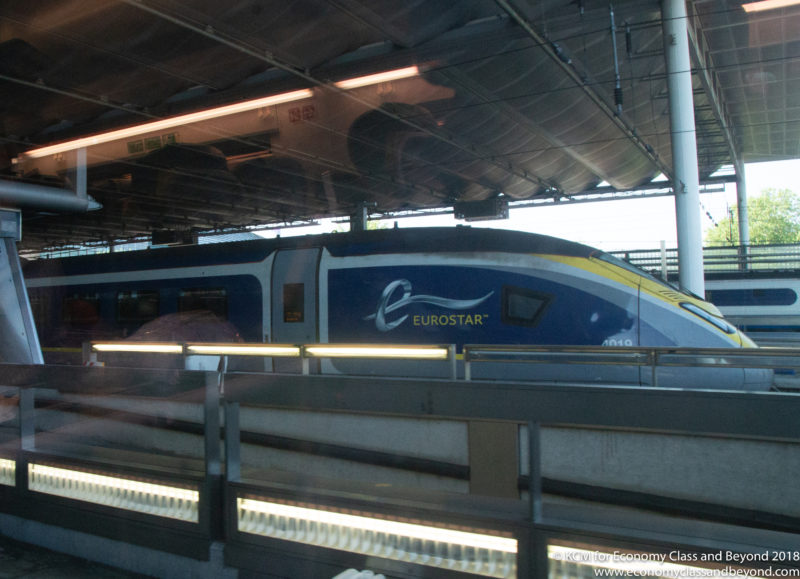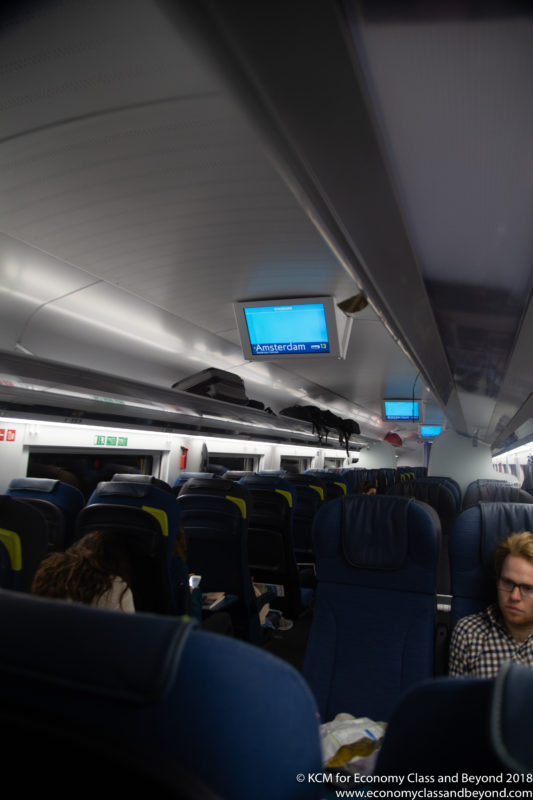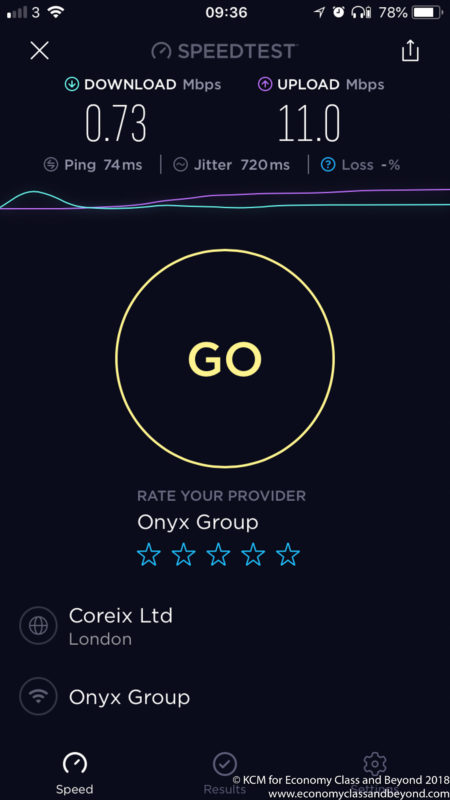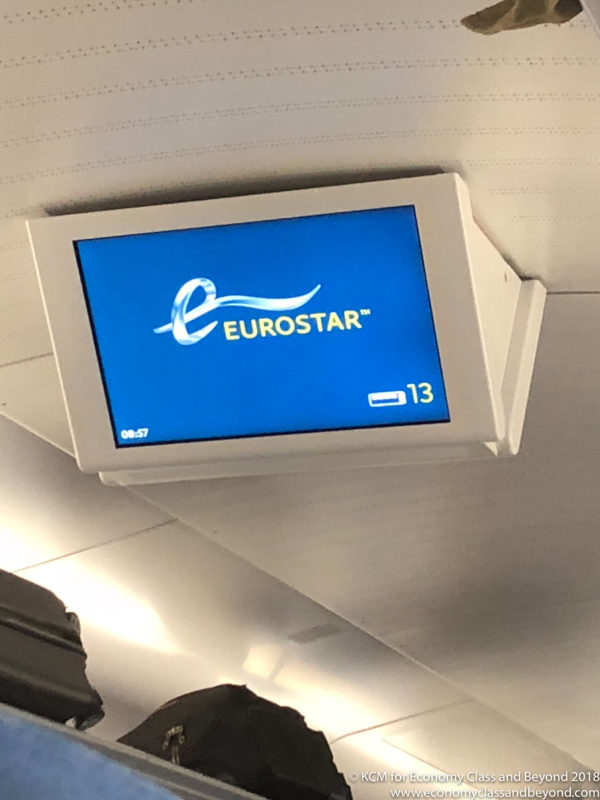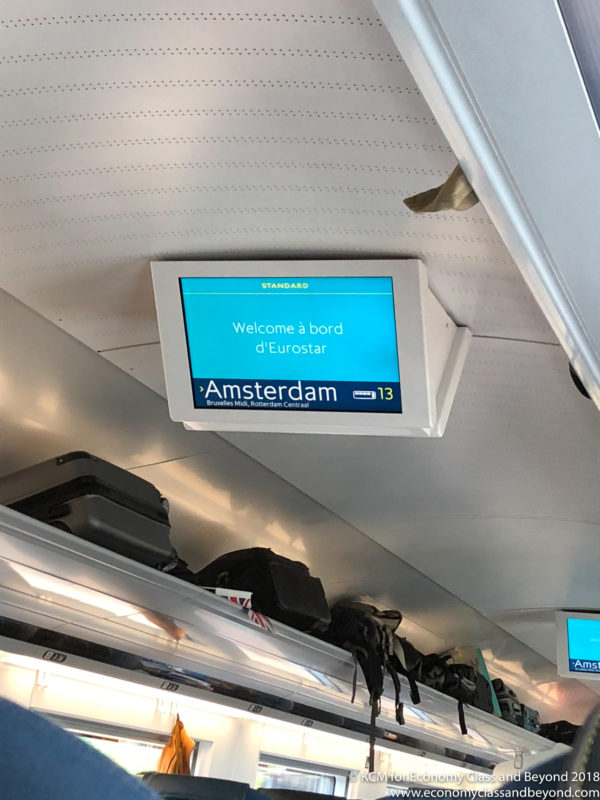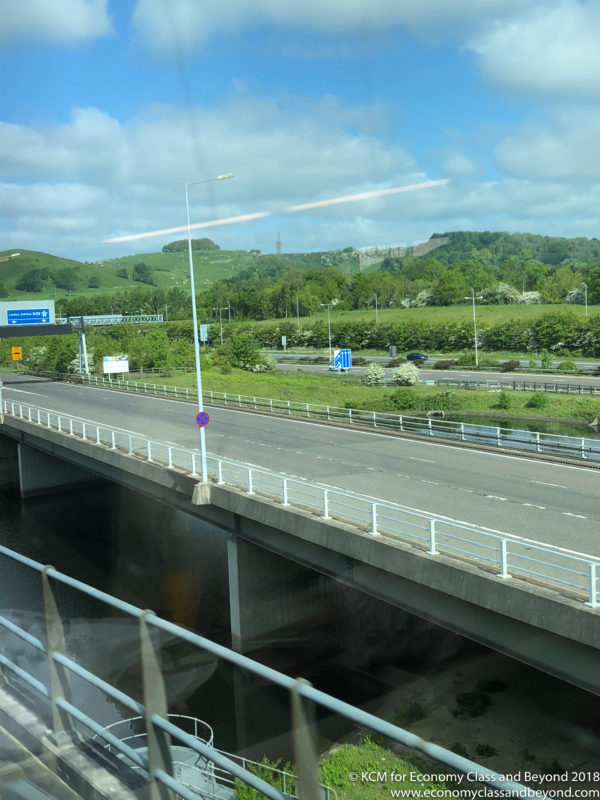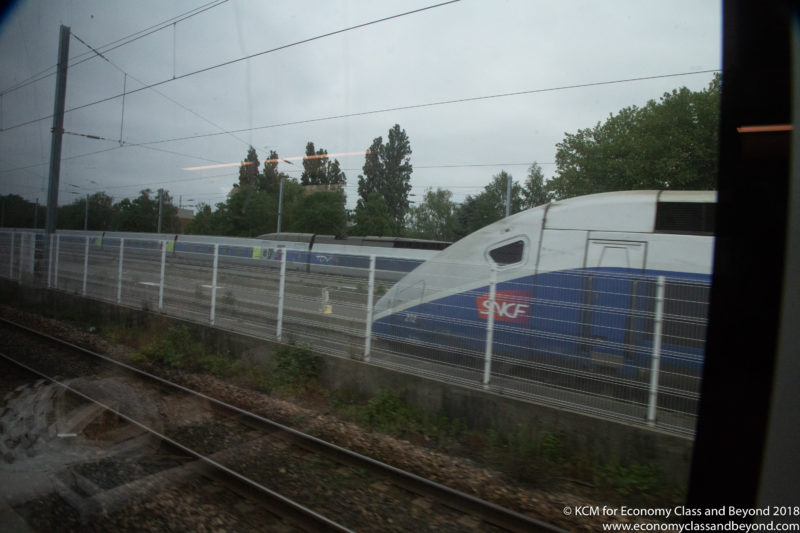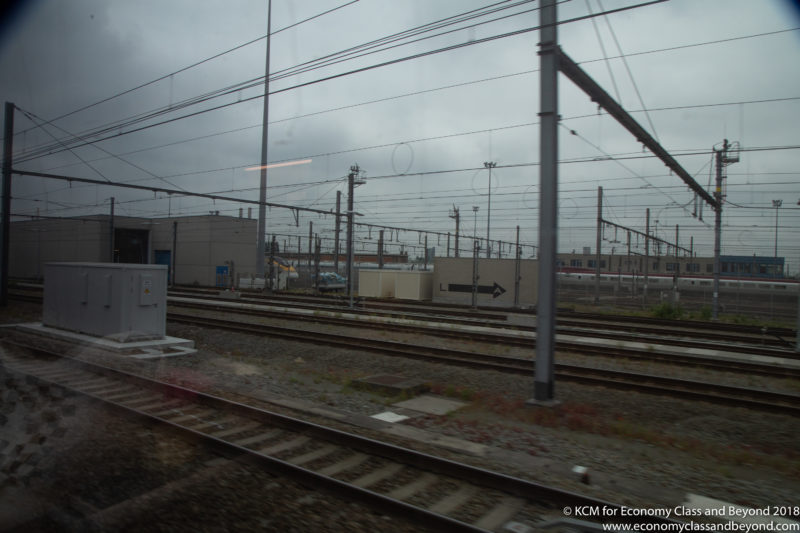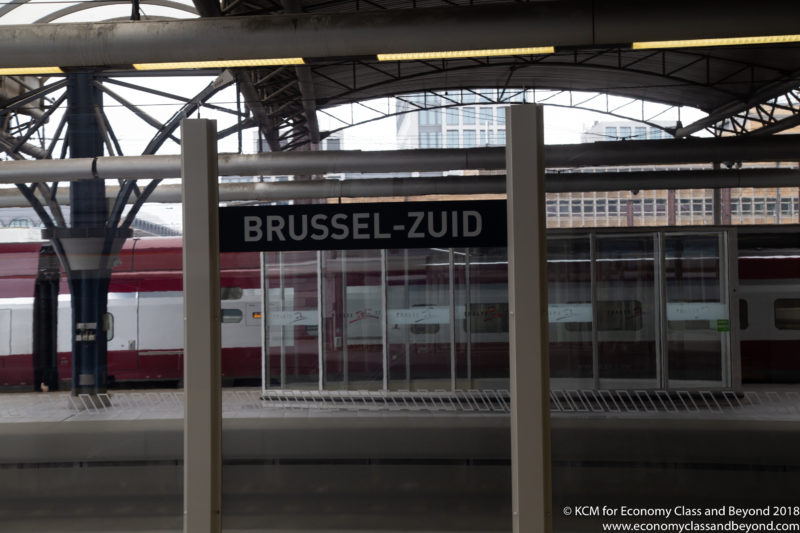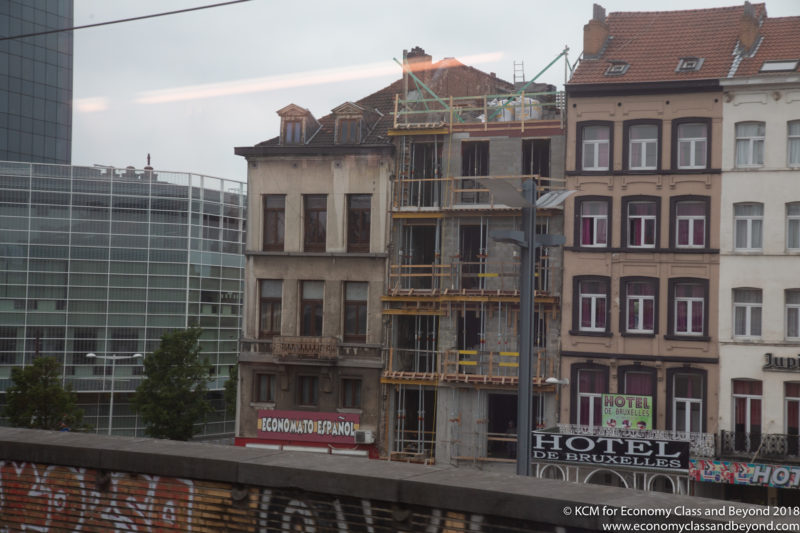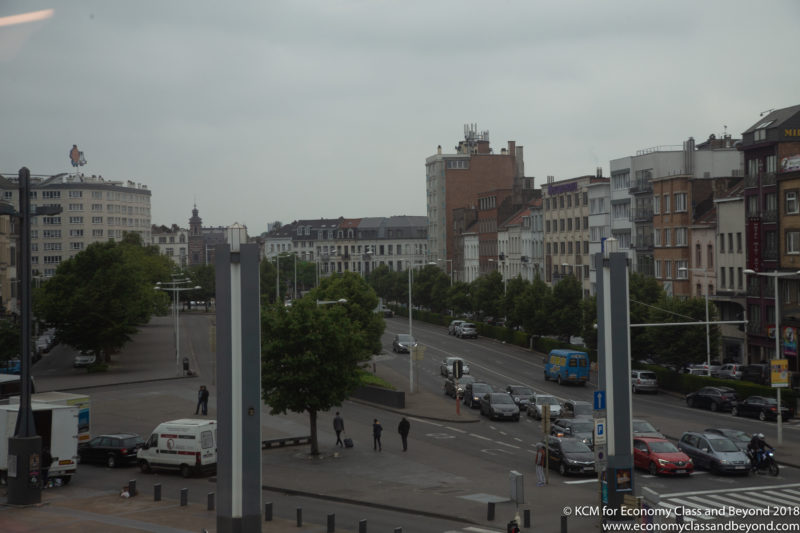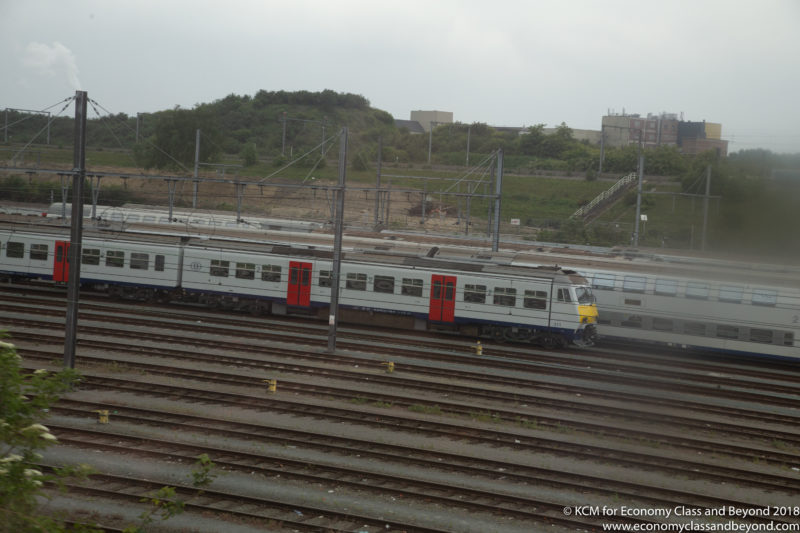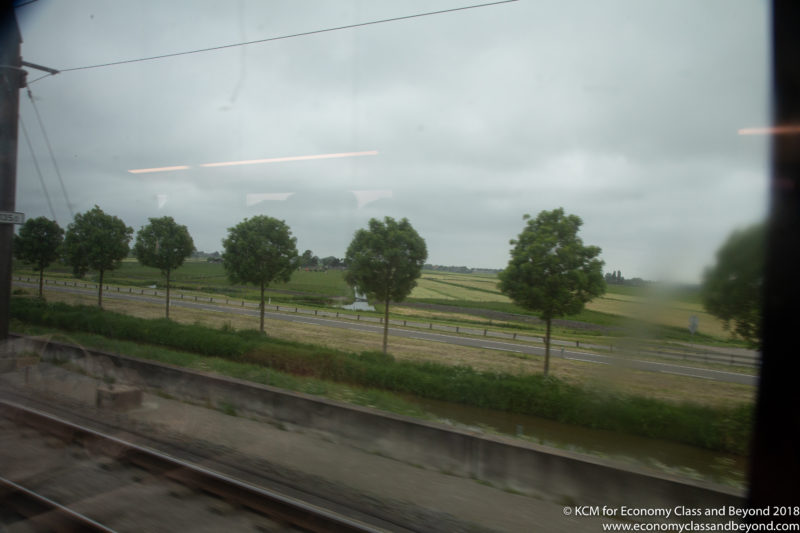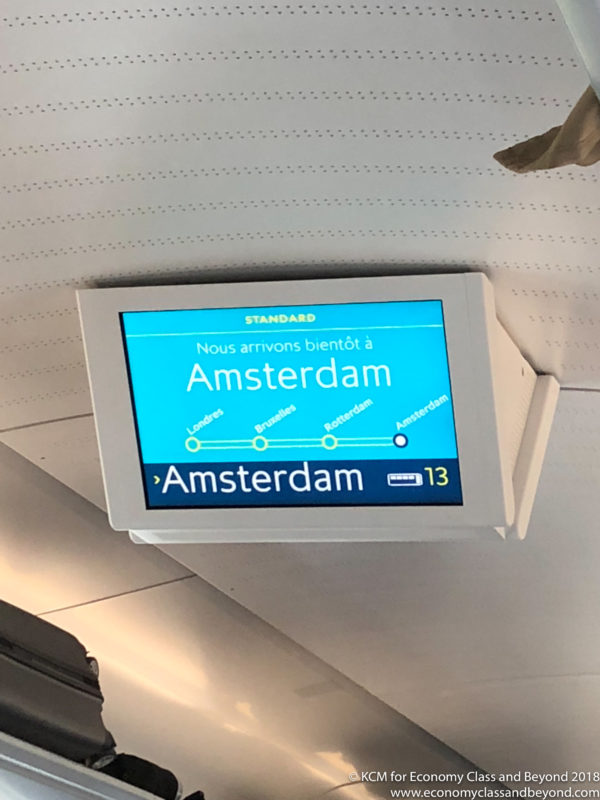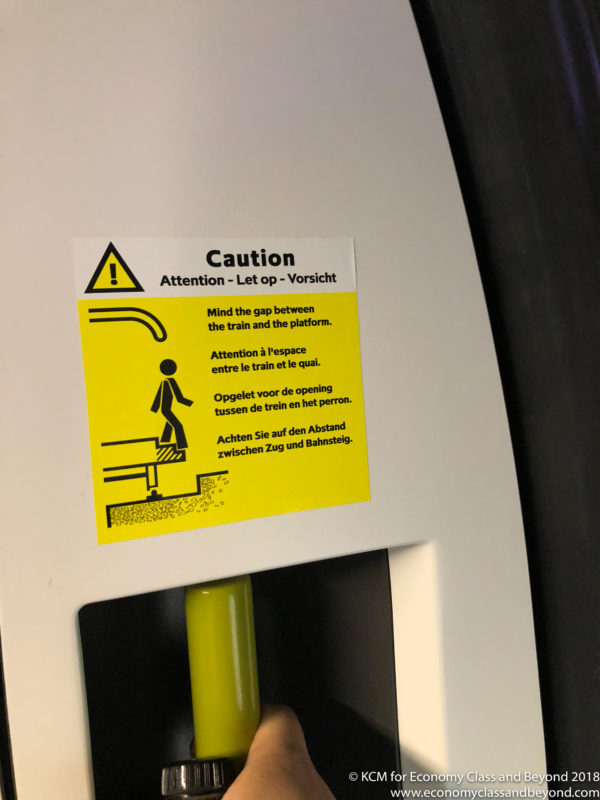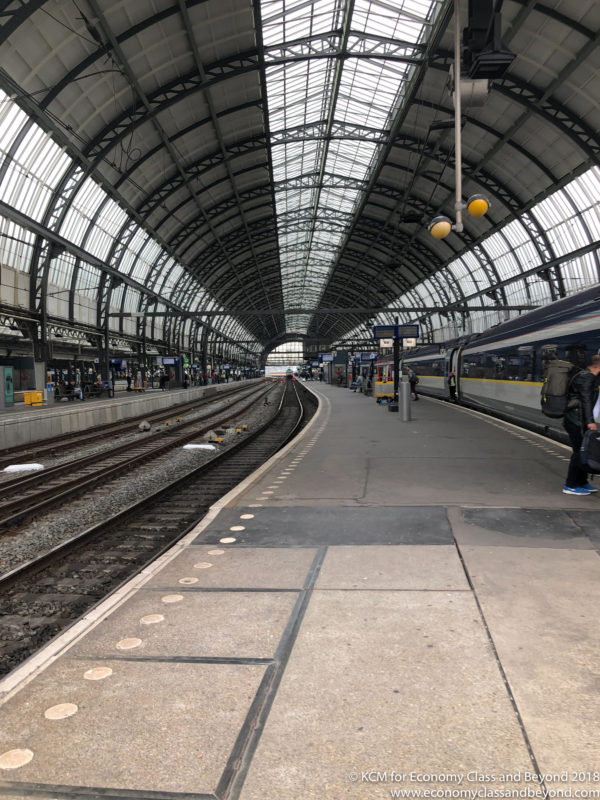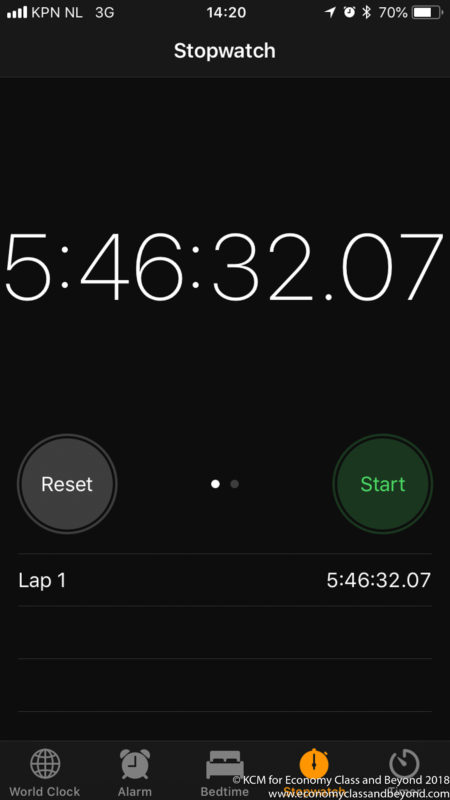Eurostar Service 9114 London St Pancras to Amsterdam Centraal – Train vs Plane!

In this … comparison. Yes. Let’s call it a comparison.
- Train vs Plane? What the blazes is this?
- Off to St Pancras on the Early Train (Virgin Trains Birmingham to London Euston), St Pancras Departures Lounge
- Eurostar train 9114 London St Pancras to Amsterdam Centraal
- A walk around Amsterdam
- Setting the timer off: Off to Amsterdam Schiphol
- A light bit of spotting at Amsterdam Schiphol
- British Airways Terraces Amsterdam Schiphol
- BA441 Amsterdam Schiphol to London Heathrow
- Into London, stopping the stopwatch and Chilterns home
- Who wins?
Eurostar 9114 London St Pancras International to Amsterdam Centraal
Eurostar e320 (Class 374), Coach 13, Seat 04, Standard Class
Price paid: £35
I headed up to the platform level, and begun the hike to the train. With the carriage I selected near the top of the train formation, in theory – it would provide a quick exit at Amsterdam, and also the train should be quiet that far up.
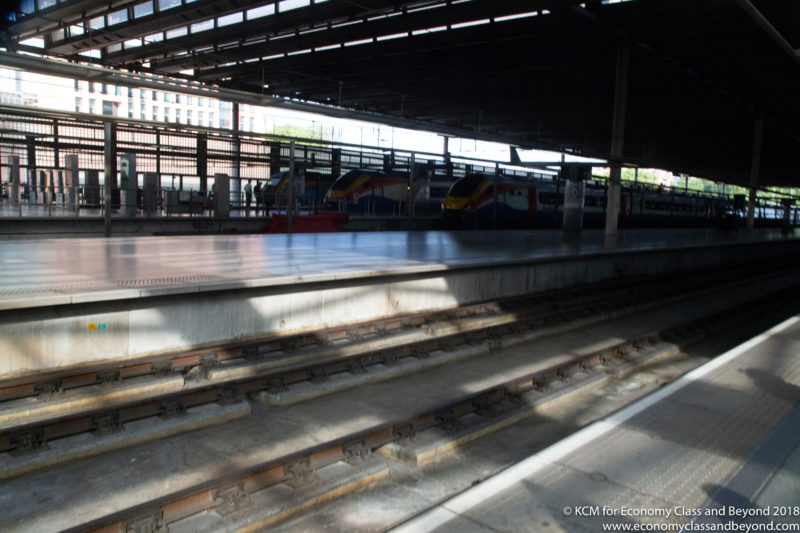
East Midlands Trains (Domestic Train services)

My carriage is somewhere this way.
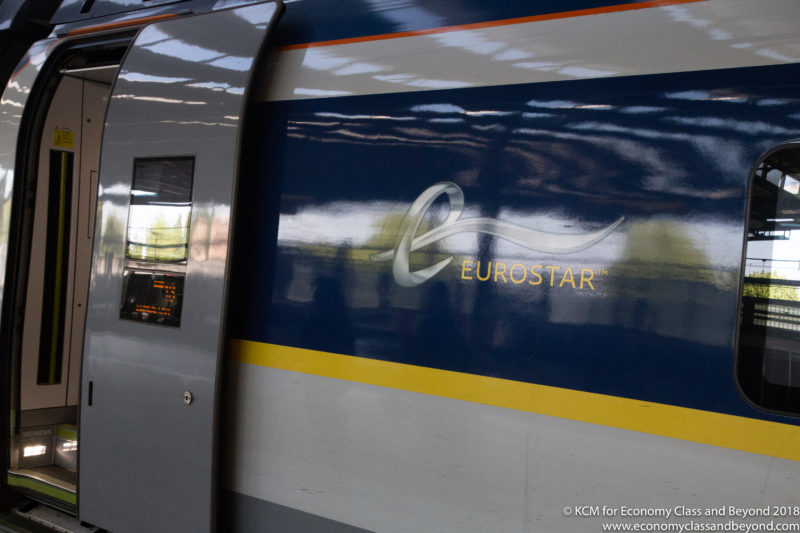
You don’t appreciate how large these train are compared to the gauge that UK Domestic trains have to fit in.
I headed aboard the train (with quite a step up from the platform), onto the train and headed to my seat.
I specified when I booked my seat a window seat. Well I got a window seat.
Of sorts.
Grr.
I settled in – because like an airplane, all seats area assigned on Eurostar – meaning no standing passengers on this service.
So, lets take a look at the seat. Seat width of 18” and pitch of 34” makes a good start for me. The recline mechanism is a little… basic, in that the seat pan slides forward, and the seat back stays in-situ.

The seat “recline” mechanism as demonstrated by the seats opposite.
The seat themselves are a little on the firm side – not unduly firm, but still in need of breaking in.
But this beats any EuroBusiness product in terms of space.
There’s also power at seat in both UK and European style outlets.
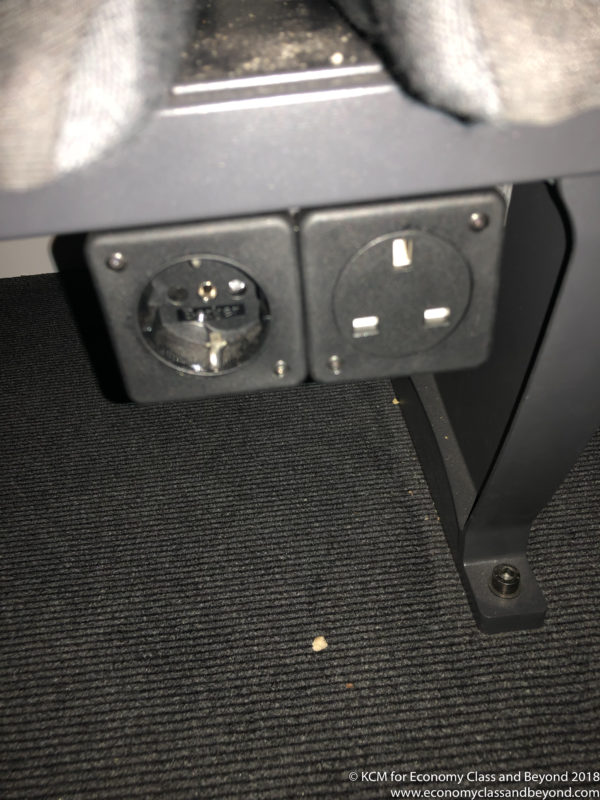
Good to see power sockets. But some USB sockets would had been nice too.
There’s also a handy safety card too
About 10 minutes after I boarded, the train doors went to close – and the train pulled out with ease from London St Pancras.
The first part of the route onto High Speed One feels a lot slower than it seems – mainly because it’s underground. Soon the train cleared the underground section of London, and crossed Essex into Kent, where the train accelerated up to speed.
With the train at speed, I decided to try out the on-train Wi-Fi. I registered with ease, and did a speed test.
And… oh dear…
It seems the Wi-Fi system uses a 3G/4G antenna rather than a satellite based system. And it shows.
Meanwhile, Eurostar offer streaming IFE, in three languages. If you’re connecting via an Apple device (iPhone/iPad), you’ll need to use the Eurostar app to access the DRM protected content.
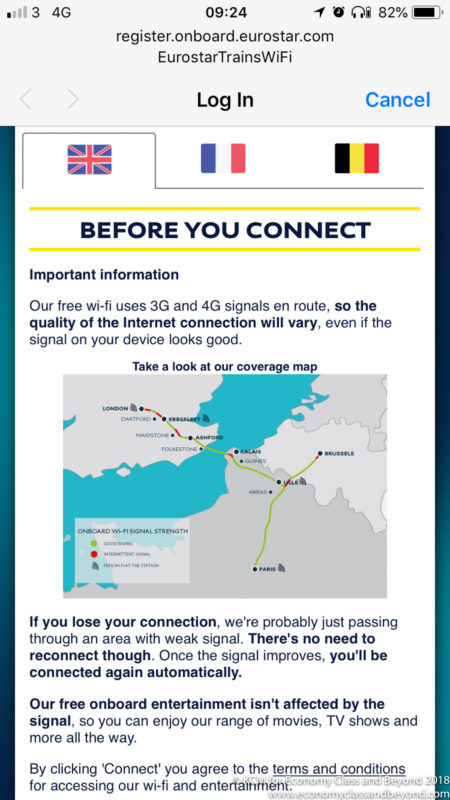
Good to know how good/bad the coverage is going to be. Surprisingly (or unsurprisingly), signal is good in the Channel Tunnel

…but viewable in the iPhone/iPad add.
There were overhead screens too showing train information.
The train begun to slow down as it approached the Channel Tunnel, grinding to a halt at a waiting point outside the tunnel. As we had “missed” our appointed path, there was a delay before we were granted access.
Eventually, our train came up to line speed for the Channel tunnel – and the brightness of a sunny British spring, and into the darkness.
Whilst that may mean in some cases, there would be no connectivity – Wi-Fi was still present and active. In addition, mobile connectivity was offered through the tunnel (and better connectivity than going through London).
20 minutes after the train dived into the tunnel, it emerged at the French portal. With the train pulling beyond the borders of the tunnel, it accelerated onto the LGV Nord for the full 186kph run.
The train sped onwards, passing through the one spot where time adds up on a Eurostar run – Lille – and turned towards the Belgian HSL1 route.

Passing the train yard south of Lille.
In fact, the only way I could tell that the train had crossed from France to Belgium was the mobile phone signal changing.
The train began decelerating for Brussels, and left the high-speed line to join the conventional lines to lead us into Midi/Zud.
In a vain effort to catch time up, an announcement was made that the train would only be stopping from Three minutes a Brussels Midi/Zuid.
The train pulled in, and the crew swapped here.
In addition, the train took on extra passengers travelling to Rotterdam and Amsterdam – in effect – this train was now a Thayls service between Belgium and the Netherlands. As a result, there was considerable movement of passengers in my carriage (and I assume other ones too).
With the train pulling out of Midi, it begun the slow task of navigating through Brussels Central (looks nice on the outside, a black hole on the inside) and Brussels Nord (If there was a station that needs to be knocked down and started again – here it is).
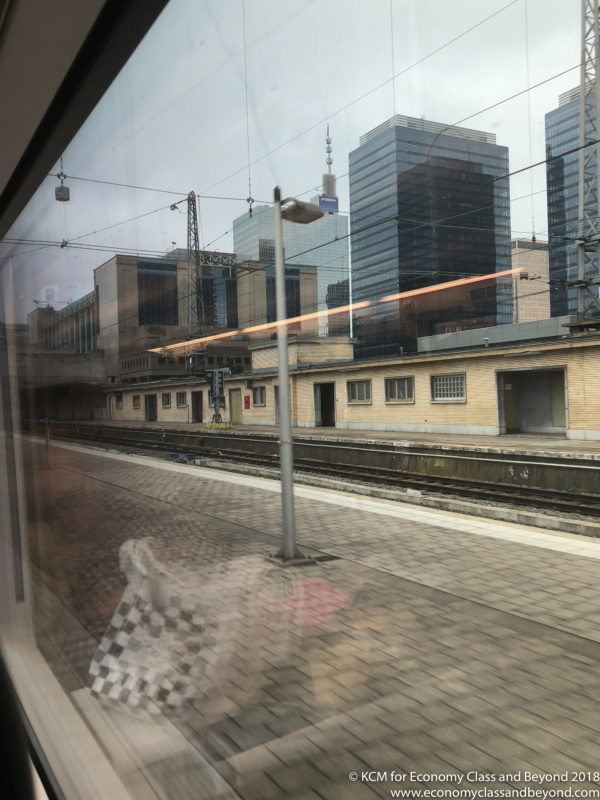
Brussels Nord. It makes Midi look… Nice.
Now I didn’t realise that the line from here wasn’t going be exactly high-speed and separated – rather were on conventional rail lines that were “accelerated”
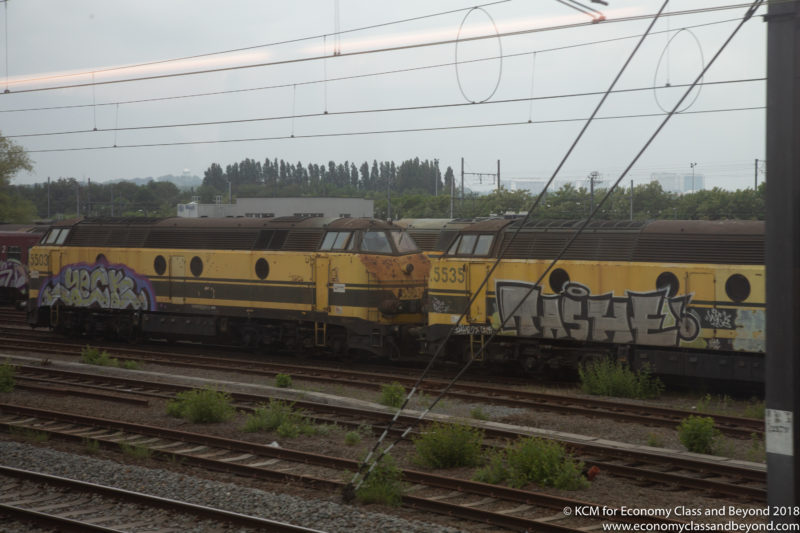
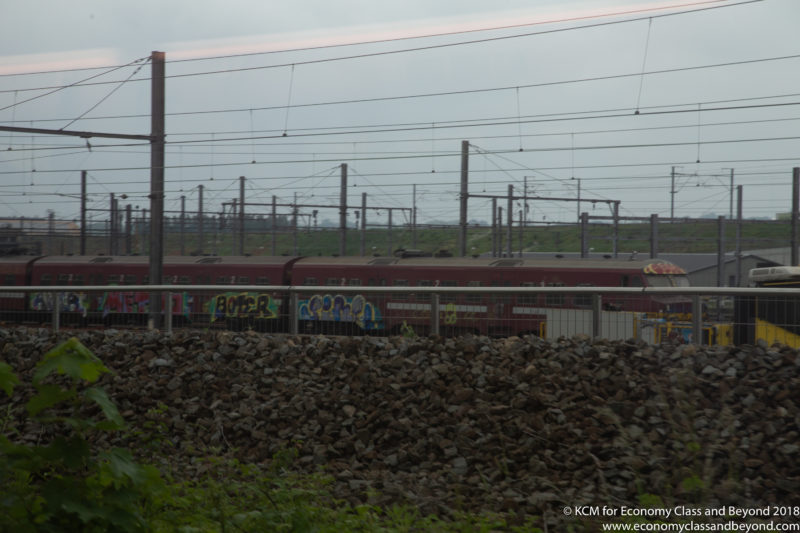
And lots of trains with graffiti.
Except our train wasn’t accelerated in the least. Rather, it was crawling and stopping a fair amount – indicating were behind a stopping service.
Sigh.
Our 40 minute delay turned into a full on 1 hour delay until the train passed Antwerp, and found a high-speed line (HSL4 onto HSL Zuid). This connected Belgium and the Netherlands, with Rotterdam appearing in quick time.
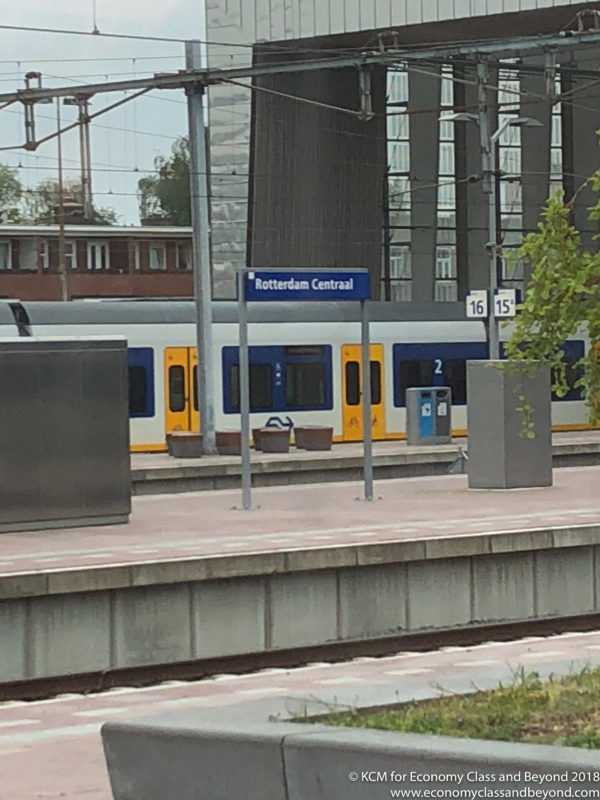
This could be Rotterdam or anywhere, Liverpool, or Rome…
The last segment of the journey kicked off with speed, with the train zipping towards Amsterdam, and the high-speed line (which ends just outside Schiphol Airport).
The train was held for a few minutes at Schiphol (confusing paassengers who were waiting for the next train), before pulling out for the last drag to Amsterdam Centraal.
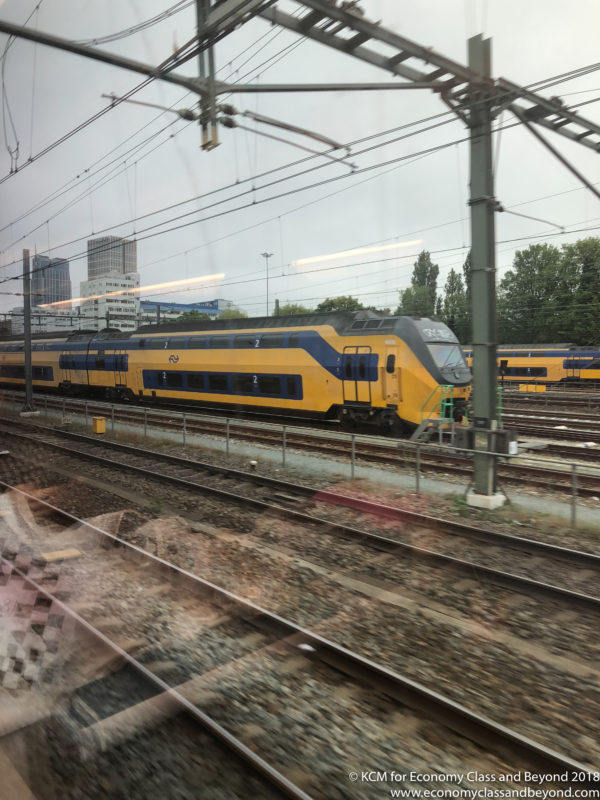
Yup. Yellow double-decked trains. Must be in The Netherlands.
Finally – over an hour an 10 minutes late, the Eurostar service arrived at Amsterdam Centraal.
I left the train feeling in some comfort and headed for the exit.
An important point to note, is that Amsterdam Centraal, you must have your boarding pass to exit the station.
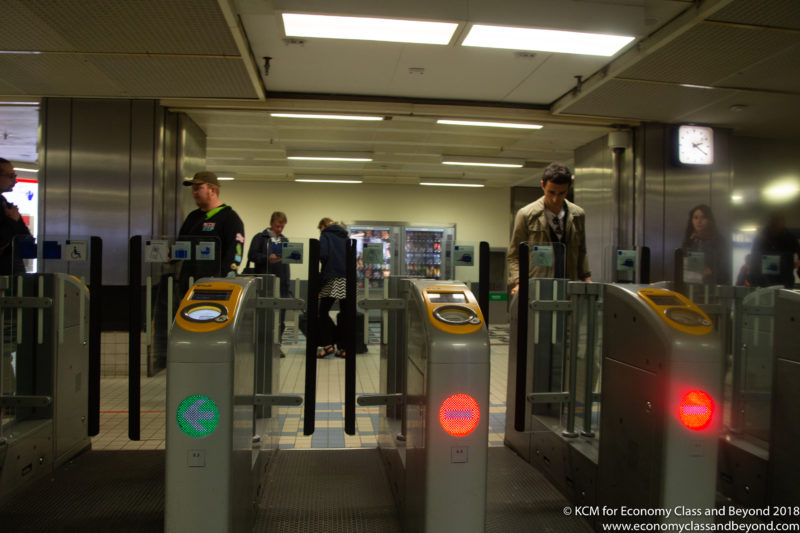
Good luck getting through the gate line without a boarding pass.
As I walked out the station, I put a stop on the stopwatch.
5 hours 46 minutes. Could be better. Less 1 hour 10 minutes for the delay – for a true reflection gives us around 4 hours 36 minutes.
Overall: The Eurostar service offered a good service between London St Pancras and Amsterdam Centraal, delivering the promise of a one-seat ride between two cities. The seating offered is comfortable (if a little firm), with reasonable at seat amenities.
But it appears there are some things that could help speed up the service – one of those is communications on the delay. This was poor at London, but improved on the train.
The other seems to be to knock some buildings and train lines down in Belgium to allow for a proper high-speed line to be built to connect Brussels and Rotterdam. It didn’t help that our train was stuck behind a local and in the end, that caused a major time penalty.
Next: Exploring Amsterdam for a few hours.
Welcome to Economy Class and Beyond – Your no-nonsense guide to network news, honest reviews, with in-depth coverage, unique research as well as the humour and madness as I only know how to deliver.
Follow me on Twitter at @EconomyBeyond for the latest updates! You can also follow me on Instagram too!
Also remember that as well as being part of BoardingArea, we’re also part of BoardingArea.eu, delivering frequent flyer news, miles and points to European reade
